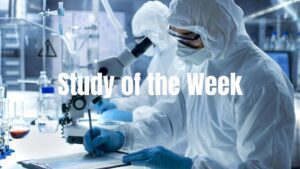Welcome to Study of the Week from Patient Worthy. In this segment, we select a study we posted about from the previous week that we think is of particular interest or importance and go more in-depth. In this story we will talk about the details of the study and explain why it’s important, who will be impacted, and more.
If you read our short form research stories and find yourself wanting to learn more, you’ve come to the right place.
This week’s study is…
Renal plasticity revealed through reversal of polycystic kidney disease in mice
We previously published about this research in a story titled “ADPKD Could Be Reversed, Shows Yale Study,” which can be found here. The study was originally published in the scientific journal Nature Genetics. You can view the abstract of the study here.
This research team was affiliated with the Yale University School of Medicine.
What Happened?
Autosomal dominant polycystic kidney disease (ADPKD) is a monogenic genetic disorder that can lead to impairment of kidney function or even kidney failure. This is the result of cysts that appear on the kidneys. The research team wanted to determine if it were possible for the effects of the disease to be reversed by editing the gene that is impacted by the disorder. In this study, the team worked with PKD2, which, when mutated, can cause ADPKD.
The key to this study was a mouse model of the illness. They developed a mouse model that would allow them to later reactivate the PKD2 gene after it had been deactivated. To conduct the study, the scientists allowed these mice to develop ADPKD. Then they reactivated the gene and were surprised by what happened. The kidneys in the mice were able to return almost completely back to normal. They shrunk back to their regular size, the characteristic fluid-filled cysts disappeared, and the kidney tubules also returned to their typical form.
Signs of damage to the organs, such as inflammation and fibrosis (scarring) were also greatly reduced. After this fascinating finding, the tried the same study using the PKD1 gene and saw similar results. The researchers determined that the reversal was possible due to the re-expression of polycystins. The team also found that autophagy, a process of regeneration, was triggered as the kidney went back to normal. In effect, the act of re-activating the gene was similar to the impact of a theoretical gene therapy.
The researchers did acknowledge, however, that the timing of the reactivation was important. If ADPKD was allowed to reach a later stage of progression, then some of the effects of the illness, like fibrosis, were not reversible.
About Autosomal Dominant Polycystic Kidney Disease (ADPKD)
Autosomal dominant polycystic kidney disease (ADPKD) is the most widespread monogenic human disorder that can be potentially fatal. However, it is still generally rare. It is characterized by the development of cysts in the kidneys and sometimes other organs as well. ADPKD is caused by mutations affecting the PKD1 gene in 85 percent of cases; in the remainder, the mutation affects the PKD2 gene. The presentation of the disease varies considerably, even within families. Signs of kidney problems often do not appear until middle age, although cysts may begin formation very early in life. Symptoms include anemia, bloody urine, acute loin pain, uremia, liver cysts, berry aneurysm, and high blood pressure. Treatment options are varied; aquaretics can slow disease progression temporarily. Other options include a number of surgical procedures, dialysis, and, when the kidneys begin to fail, kidney transplant. To learn more about ADPKD, click here.
Why Does it Matter?
The results of this study have several important implications. First and foremost, the findings demonstrate that a gene therapy approach could be an effective therapy for ADPKD, and, if timed correctly, could potentially reverse the overwhelming majority of the disease effects. This is exciting news for the ADPKD patient community.
The data also reveals that remarkable plasticity and versatility of the kidney. The organs were capable of developing cysts, enlarging greatly in size, and developing abnormal tubules, but once the genes were reactivated, the polycystins were able to bring everything back to normal. These results were definitely unanticipated and suggest that the true function of polycystin is not yet fully understood:
“One surprising finding is that this process of the kidney getting cystic and growing and then getting smaller again is actually possible. That’s kind of unexpected and interesting, and it begs the question of what the polycystins normally do, because they must be regulating some feature of tubules getting bigger and smaller to accommodate maybe different physiologic conditions in normal states.” – Stefan Somlo, C. N. H. Long Professor of Medicine (Nephrology) and Professor of Genetics; chief, Section of Nephrology
Future research from this team will evaluate how the reversal process takes place. This means determining which molecular pathways are getting activated as part of this process and figuring out how said pathways are working.
Overall, these findings demonstrate that ADPKD can be treated effectively, that mouse models can be incredibly valuable, and that there is still a lot that we don’t understand about the kidney and the polycystins more specifically.



